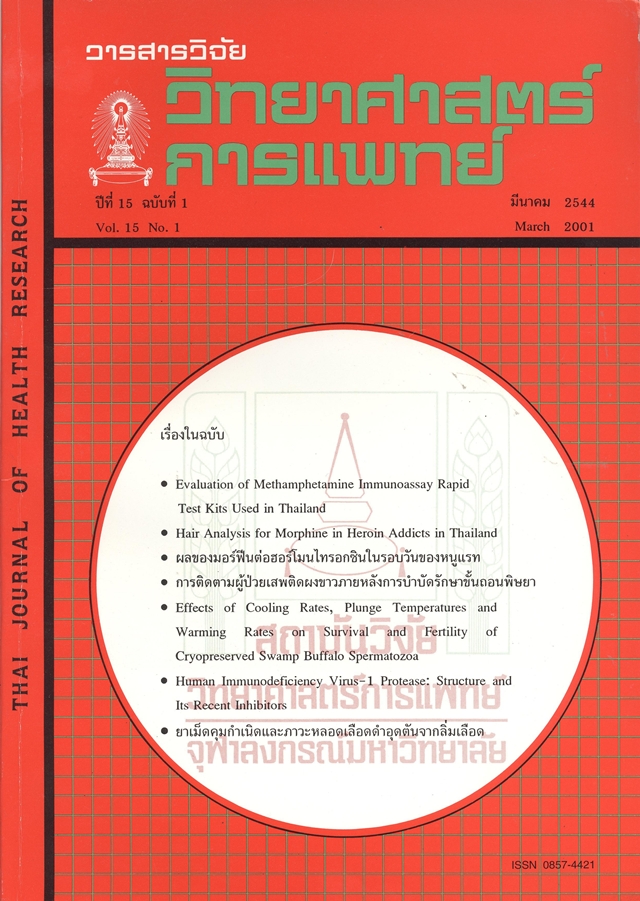Human Immunodeficiency Virus -1 Protease : Structure and Its Recent Inhibitors
Keywords:
protease, HIV - 1, protease inhibitor, antiretroviral drugAbstract
Sources, structure and function of human immunodeficiency virus-1 (HIV-1 protease are overviewed in this article. The enzyme can be synthesized by stepwise solid-phase or produced by gene cloning in yeast and bacteria. Its structure is described as a dimer form which belongs to aspartic protease family. The enzyme plays an essential role in cleaving the HIV protein precursor initially formed by viral mRNA translation into the mature HIV. It normally cleaves the bonds between an aromatic residue (Tyr or Phe) and a Pro residue or cleaves between two hydrophobic residues in viral polypeptide. This enzyme is a potential target for the development of anti-AIDS therapy using a HIV-1 protease inhibitor. The recent examples of its inhibitor are also discussed.







